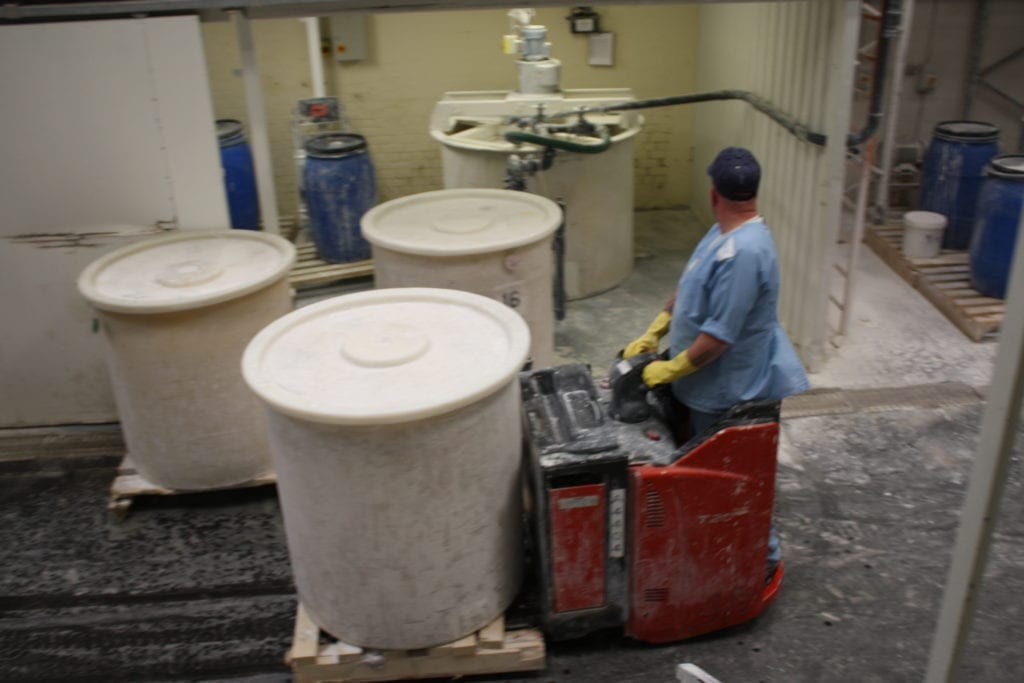Stage 6 - Glaze Making
The glaze was a thin coating sprayed onto the cast. After firing it gave the piece its glossy finish and colour.
Materials included Silica Sand from Chelford, North Cape Nepheline Syenite (NCNS) from Norway and Calcium Carbonate. All raw materials were tested by the Lab as they were received to ensure they conformed to the specifications.
The materials were mixed with water in large Ball Mills. As the mills turned, the materials were ground by the action of the small ceramic balls inside. It would take 14 – 18 hours to produce the base glaze. Stains could then be added to produce batches of various colours. The glaze was passed through a sieve, with three sets of magnets to remove any metals, especially iron particles, that could contaminate the glaze.
Reclaim glaze recovered from the spraying process was returned to Glaze Making, reconstituted and re-used.
Each batch of glaze was tested by the Lab to ensure it was to the correct specification before being released into the production system.
Over the years although white was always the most popular colour, at times there could be up to 10 different colours in production as fashions changed.




